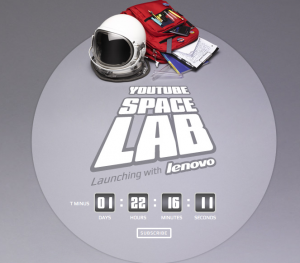YouTube and NASA are challenging students to design a science experiment that can be performed in space. Students from 14 to 18 years old can upload videos of their experiments onto YouTube’s Space Lab website.
A panel of scientists, astronauts, and educators, including Stephen Hawking, will judge the entries, and the two winning experiments will be conducted on the International Space Station 250 miles above Earth and live streamed on YouTube.
"The idea of seeing something you conceive and build in your ordinary classroom being actually flown on a rocket, being actually sent to the International Space Station, being actually carried out by a national, is the stuff of fiction. We think that is going to be the thing that gets kids excited," said YouTube’s Zahaan Bharmal, who conceived of the challenge.
NASA's counterparts in Europe and Japan are also participating in the worldwide initiative, as are Lenovo and Space Adventures.
More details: Students in two age categories, 14-16 years old and 17-18 years old, either alone or in groups of up to three, may submit a YouTube video describing their experiment to SpaceLab. From the entries, six regional finalists will be brought to Washington, D.C. in March 2012 to experience a ZERO-G flight and receive other prizes. And from that group, two global winners, one from each age group, will be announced and later have their experiments performed on the ISS.


